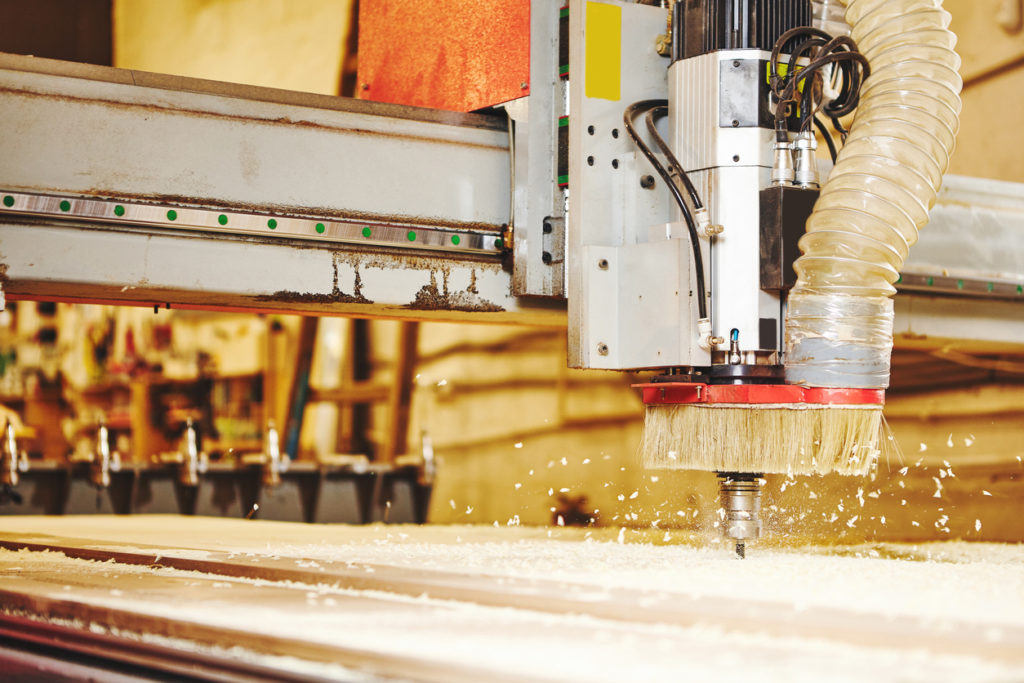
Calculating Speed and Feeds with a Chip Load Chart
CNC machines allow for increased automation, flexibility, and overall productivity. But when it comes to these machines, calculating speed and feeds with a chip load chart is one of the most important concepts to master.
What is Spindle Speed?
Spindle speed is a critical part of CNC operations, as it determines how fast the tool rotates. This is generally measured as Revolutions Per Minute (RPM). In order to achieve accuracy and precision when calculating speed and feeds with a chip load chart, spindle speed needs to be carefully controlled. Proper spindle speed settings ensure maximum effectiveness in cutting, drilling, and finishing applications and should not be overlooked during the CNC programming process. In order to calculate the proper spindle speed, you need to perform calculations using feed rate, chip load, and depth of cut (keep reading for more information).
What is a Feed Rate?
A feed rate is the rate at which a tool cuts or moves through a material in order to machine that material into a particular shape. It can also be known as speed of cut and is governed by the cutting conditions such as spindle speed, depth of cut, and the particular tool being used. This rate is typically calculated in inches per minute (IPM) and must carefully be set to prevent damage to the material or machinery.
What is a Chip Load Chart and How do I Use it?
Chip load is the thickness of the material being removed each time the cutting edge of the tool passes through the material being machined.
Using a chip load chart is moderately easy; refer to the documentation provided by the tool manufacturer for the recommended chip load in the desired material (ex: hardwood, or softwood, or laminated plywood, etc). Once you have these values, use our feeds and speeds calculators to determine the accompanying Spindle RPM and Feed Rate. Make sure to start at the lower end of the calculated feed rate and then increase the feed rate until your finish deteriorates. At this point, bring back down the feed rate to reach the desired results. Remember, you should have evenly sized chips, not dust (there can be exceptions here for materials like MDF), and your tool should NEVER be exceedingly hot to the touch. (Chip load charts are often used in conjunction with tooling manufacturers’ recommendations for optimal machining performance, as well as the specific end-use application.)
Here is a formula to explain this further:
Chip Load (inches) = Feed rate (IPM) / (RPM x No. of Flutes)
Spindle Speed (RPM) = Feed Rate (IPM) / (Chip Load x No. of Flutes)
Feed Rate (IPM) = RPM x No. of Flutes x Chip Load
Why is Using a Chip Load Chart While Calculating Speed and Feeds so Important?
Speed and feeds refer to the rotational and feed rates of a tool which will affect the performance of that tool in regard to cutting power, material removal rate, accuracy, surface finish, etc. Knowing how to properly calculate speed and feeds can be critical for achieving the desired results from CNC machining operations.
When routing you generate a lot of heat. Excessive heat is the leading cause of tool wear. That’s why understanding how to maintain this heat by using a chip load chart is so important. As the material is cut, heat builds up due to friction. A properly running tool should never be hot to the touch because it can break down the cutting edge materials in the tool which leads to them being dull and insufficient. This heat should be removed with the chip. To prevent this built-up heat from damaging the tool and workpiece, it is crucial to select a chip load that will enable enough cutting time for efficient cooling of the tool and workpiece. In addition, effective dust collection is crucial to keep the temperature of a cutting tool within normal operating conditions.
Still Not Seeing Results When Using a Chip Load Chart?
This is all a good starting point for calculating speed and feed rate, however, there can be some factors that prohibit the desired outcome. Sometimes parts are too small to effectively run at the desired rate, or your machine might be too old, or not capable of running at the proper speed rates.
If you are not seeing results at the manufacturer recommended chip load then you may have a dull cutting tool or you may need to acquire a tool that is a more effective design for the tool path and material you are machining. Furthermore, different materials require different tools and feed rates; if incorrect feeds or speeds are used for certain materials then burrs may develop on the part surface. Lastly, depending on whether one is performing a climb cut or conventional cut greatly affects the chip load chart as it would result in reverse rotation in climb cutting causing an increase in torque on the tool spindle.
Ultimately these problems can jeopardize part quality as well as safety measures on certain projects making it essential for manufacturers to consider all these issues before making any adjustments to their chip load calculations. But even so, the information provided by manufacturer chip load charts – typically related to cutting tool diameter and type, material being milled, machine horsepower, etc. – helps to ensure that operators select the correct spindle speed and feed rate setting which enables them to obtain optimum performance from their chosen tool. Not only does this increase success rates but it also helps reduce wear on the cutting tool, saving time and money in materials costs.
